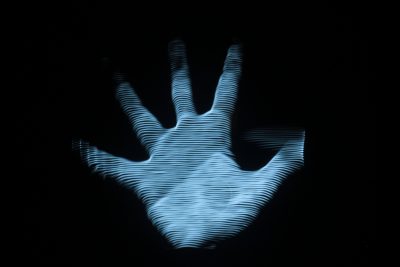Vector Synthesis Library for Pure Data
The Vector Synthesis library allows the creation and manipulation of 2D and 3D vector shapes, Lissajous figures, and scan processed image and video inputs using audio signals sent directly to oscilloscopes, hacked CRT monitors, Vectrex game consoles, ILDA laser displays, or oscilloscope emulation softwares using the Pure Data programming environment.
You can see the latest version of the code here:
https://github.com/macumbista/vectorsynthesis
Audio waveforms control the vertical and horizontal movements as well as the brightness of a single beam of light, tracing shapes, points and curves with a direct relationship between sound and image.
The technique is based on the well-known principle of Lissajous figures, which are a mathematical representation of complex harmonic motion. Originally displayed by reflecting light between mirrors attached to a pair of vibrating tuning forks, we are most used to seeing them on the screen of an oscilloscope, where they can be produced using pairs of electronic oscillators tuned to specific ratios.
There is a wealth of such experiments from the 1950s onward by major figure such as Mary Ellen Bute, John Whitney, Larry Cuba, Manfred Mohr, Nam June Paik, Ben Laposky, Bill Etra, and Steina & Woody Vasulka, which were all highly inspiration to the development of this library.
You can see a demo video of the scan processing and 3D rotation functions here:
And you can see a two hour video presentation of this library here:
The author also wishes to thank the following people and institutions for their support of the project:
Aalto University Media Lab (Helsinki FI)
Marianne Decoster-Taivalkoski/CMT Sibelius Academy (Helsinki FI)
Jason and Debora Bernagozzi/Signal Culture (Owego NY USA)
Borut Savski/Cirkulacija2 (Ljubljana SI)
Lars Larsen/LZX Industries (Portland OR USA)
Spektrum (Berlin DE)
Andy Farnell
Ivan Marusic Klif
Dave Jones
Nathan Thompson
Roland Lioni/Akira’s Rebirth
Lee Montgomery
Derek Holzer Berlin July 2017
Tags: pure data, vectors, video
I looked into Vectrex monitors and they are pretty pricy. Any thoughts on cheaper (hardware) alternatives?
The HARDWARE section reads:
Oscilloscope with X/Y/Z inputs (all DC-coupled)
—or—
Vectrex game console modified for X/Y/Z input (all DC-coupled)
—or—
Vector monitor with X/Y/Z inputs (all DC-coupled)
-or-
Oscilloscope software with X/Y/Z inputs such as Hansi Raber’s “Oscilloscope!” app
(Note: “Oscilloscope!” currently lacks brightness input)
plus audio loopback application such as SoundFlower or Virtual Audio Cable
Z-axis input for brightness is recommended but many shapes and effects can still be done without it.